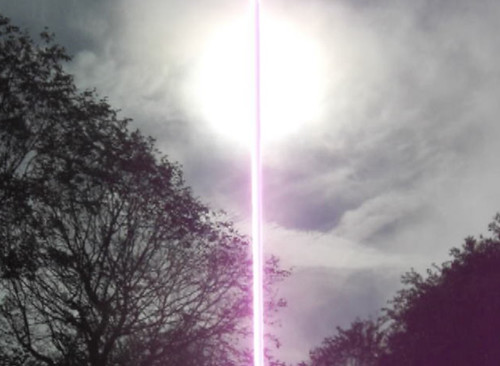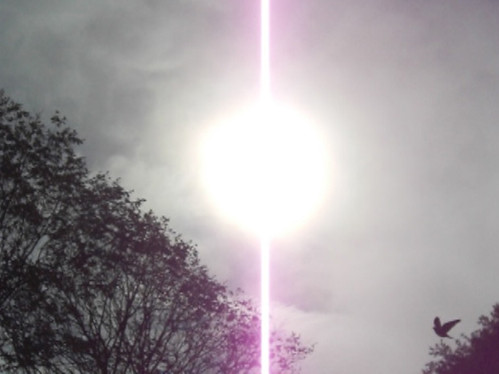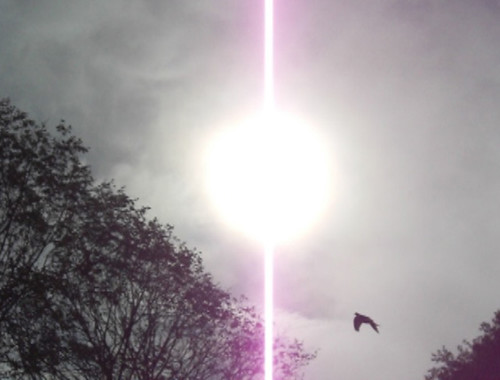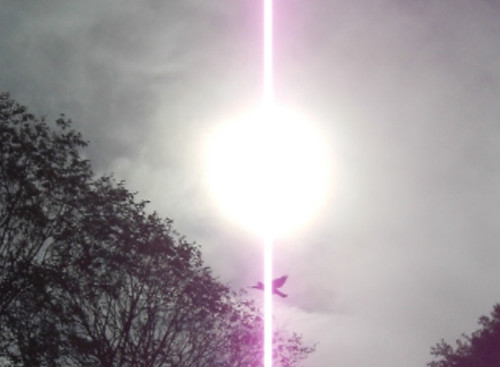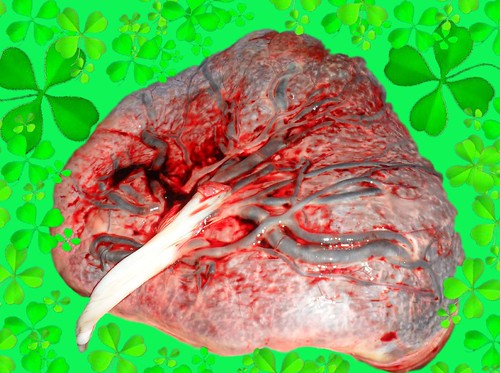
Monday, 12 December 2011
Placenta
Three couples that I know have all recently had babies approximately within a month of each other! Today my friend's beautiful Baby Girl arrived into this world :-) Her partner brought the placenta home while mum & baby were still recovering in hospital. He asked me if I wanted to see the placenta. Wow, I never seen a placenta before, well not in the real world. It looked so amazing that I just had to make them a card using a photo. I couldn't believe how tree/plant like it was. This placenta seemed like a perfect example of what I had been learning previously while researching my paper in connection with exploring chaos theory and nature.


Thursday, 8 December 2011
Postmodernism Exhibition at the V&A
Recently I visited the Postmodernism Exhibition at the Victoria and Albert Museum in London. I had previously been to Robotville Festival on the same day, so I didn't expect it to compete with seeing lots of cool robots, which it didn't :-) But having said that I did enjoy this exhibition too, as there were aspects of the show that I loved.
Initially the first thing that I found fascinating to watch was actually a projection which was used simply as an effect to show off some of the sculptures. I don't think it was part of any of the work itself. I found this to be quite mesmerizing, which was reminiscent of watching gently moving ocean waves lit by moonlight. This also reflected onto a mirrored sculpture which was wonderful to watch. I was also puzzled by this as I couldn't work out where the projection was coming from! I ended up having to ask an assistant, which was quite weird as he said that this was the first thing that he found fascinating too, and it also took him ages to figure out where the projection was coming from.
My next favourite part of this exhibition was watching a film clip from the film Blade Runner. While I've seen this film so many times in the past it was brilliant seeing this clip as it stirred my memory to re-watch the film again.
Another video which I found absolutely amazing to view was a clip from the documentary Koyannisquatsi directed by Godfrey Reggio with music by Philip Glass. This was projected onto a large screen, and I watched this video loop several times while I was there. At one point one of the assistants walked through a nearby door which made the screen move. This happened just as the focus of the video was on an image of a tower block which made the building appear as if it was breathing. This was totally accidental but it looked so effective and gave me ideas for doing a video projection onto a moving screen.
Even though there were underlying dystopian messages in this video extract, I found it so beautiful to watch too. I came away wanting/needing to see all of this film, which I now have :-)
Click here for link to the Postmodernism Exhibition at the V&A.
Initially the first thing that I found fascinating to watch was actually a projection which was used simply as an effect to show off some of the sculptures. I don't think it was part of any of the work itself. I found this to be quite mesmerizing, which was reminiscent of watching gently moving ocean waves lit by moonlight. This also reflected onto a mirrored sculpture which was wonderful to watch. I was also puzzled by this as I couldn't work out where the projection was coming from! I ended up having to ask an assistant, which was quite weird as he said that this was the first thing that he found fascinating too, and it also took him ages to figure out where the projection was coming from.
My next favourite part of this exhibition was watching a film clip from the film Blade Runner. While I've seen this film so many times in the past it was brilliant seeing this clip as it stirred my memory to re-watch the film again.
Another video which I found absolutely amazing to view was a clip from the documentary Koyannisquatsi directed by Godfrey Reggio with music by Philip Glass. This was projected onto a large screen, and I watched this video loop several times while I was there. At one point one of the assistants walked through a nearby door which made the screen move. This happened just as the focus of the video was on an image of a tower block which made the building appear as if it was breathing. This was totally accidental but it looked so effective and gave me ideas for doing a video projection onto a moving screen.
Even though there were underlying dystopian messages in this video extract, I found it so beautiful to watch too. I came away wanting/needing to see all of this film, which I now have :-)
Click here for link to the Postmodernism Exhibition at the V&A.
Monday, 5 December 2011
Robotville Festival
The Robotville Festival will celebrate the most cutting-edge in European robot design and innovation – and explore the cultural significance of robots. You can meet over 20 unique robots and their makers, who will be on hand to demonstrate their work and talk to visitors. Robotville
At the weekend I visited Robotville held at the Science Museum in London. See video from the New Scientist Blog. While there were so many amazing robots, I found the Swarm Robots particularly fascinating. Click here for photo. The Swarm Robots can be found on the left hand side second from the bottom. I was totally gutted that I didn't take my camera. I didn't think they would allow photography, but little children were there happily snapping away :-)
The Swarm Robots had behaviour traits similar to flocking; their intention was to stay within the group even though they would sometimes get lost. Since roboticist Alan Winfield was on hand to answer questions, I asked him why were some of them getting lost? He mentioned how this group of little robots relied on light sensors as a way of communicating to keep the group together. However due to any external surrounding light they will sometimes go off track and get lost by following another light source, but they will eventually find their way back to the group.
Here's an interview with Alan Winfield about the Swarm Robots click here for link.
Also click here to view Alan's blog.
At the weekend I visited Robotville held at the Science Museum in London. See video from the New Scientist Blog. While there were so many amazing robots, I found the Swarm Robots particularly fascinating. Click here for photo. The Swarm Robots can be found on the left hand side second from the bottom. I was totally gutted that I didn't take my camera. I didn't think they would allow photography, but little children were there happily snapping away :-)
The Swarm Robots had behaviour traits similar to flocking; their intention was to stay within the group even though they would sometimes get lost. Since roboticist Alan Winfield was on hand to answer questions, I asked him why were some of them getting lost? He mentioned how this group of little robots relied on light sensors as a way of communicating to keep the group together. However due to any external surrounding light they will sometimes go off track and get lost by following another light source, but they will eventually find their way back to the group.
Here's an interview with Alan Winfield about the Swarm Robots click here for link.
Also click here to view Alan's blog.
Labels:
Alan Winfield,
Exhibitions Visited,
Subject Research
Saturday, 3 December 2011
New Ideas
This week my new great nephew arrived into this world :-) I made a cast of his little feet and took some photos.
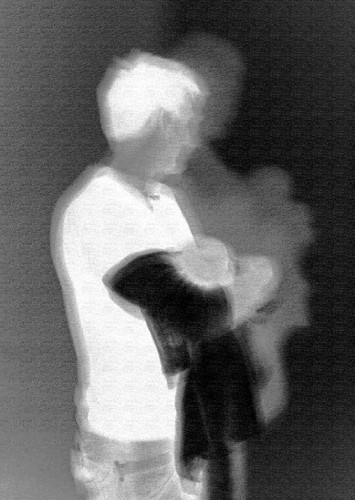
While this photo isn't part of my studio practise as such, the shadows made me think about previous family generations and how different and unique people are.
The same day I also began recording sounds of people breathing. I previously had been having ideas for an installation whilst writing my research paper, but I had to put this on hold until now. I began by asking a few friends and family members if I could record their breathing. This was quite fun and it was so tricky for people to breath into a recording device without me making them laugh, so I had to disappear while they did this :-)
This will be an ongoing process for a while. I will be gathering the breathing sounds of people and also collecting some of their breathe in balloons.

While this photo isn't part of my studio practise as such, the shadows made me think about previous family generations and how different and unique people are.
The same day I also began recording sounds of people breathing. I previously had been having ideas for an installation whilst writing my research paper, but I had to put this on hold until now. I began by asking a few friends and family members if I could record their breathing. This was quite fun and it was so tricky for people to breath into a recording device without me making them laugh, so I had to disappear while they did this :-)
This will be an ongoing process for a while. I will be gathering the breathing sounds of people and also collecting some of their breathe in balloons.
Tuesday, 29 November 2011
Saturday, 19 November 2011
Starlings at West Pier
Here's a video clip that I filmed today of the Starlings at West Pier. According to the Starling Trust there will be more birds arriving each day from now until December :-) click here for link to their site.
I slightly colourised the version below, but prefer the natural colours above.
I slightly colourised the version below, but prefer the natural colours above.
Friday, 18 November 2011
Flock of birds finishing dance
Today I videoed a flock of birds dancing at West Pier in Brighton. I just happened to be there as they were finishing their dance :-)
The version below is slightly longer:
The version below is slightly longer:
Thursday, 17 November 2011
Abstract for research paper
This is my latest abstract for my research paper.
Generative Art: Exploring how this process simulates nature, and if the method is essential to the Artist's work? Looking a works through Joseph Nechvatal, Philip Galanter and Shardcore.
Generative art is not an art movement or ideology, it is mainly known or thought of as a process, yet artist's utilize this method for a number of different reasons. This paper will attempt to question and explore generative art by looking at some of the motives behind this practice. Beginning by giving a brief exploration of generative art, before looking at how this method may simulate nature by discussing chaos theory and its relationship to specific styles using this method. Subsequently discovering if using a generative process has been essential to the meaning within the artists work, by looking at works through the featured artists via interviews collected predominantly for this paper; in conjunction with exploring leading writers in this field.
Although generative art can be utilized as a process or tool. I hope this paper will express how it can also be a fundamental element that artist's employ, thus expressing how generative methods can hold the essence and meaning within the artwork.
Keywords
Generative Art, Essence, Simulation, Nature, Process, Chaos Theory.
Generative Art: Exploring how this process simulates nature, and if the method is essential to the Artist's work? Looking a works through Joseph Nechvatal, Philip Galanter and Shardcore.
Generative art is not an art movement or ideology, it is mainly known or thought of as a process, yet artist's utilize this method for a number of different reasons. This paper will attempt to question and explore generative art by looking at some of the motives behind this practice. Beginning by giving a brief exploration of generative art, before looking at how this method may simulate nature by discussing chaos theory and its relationship to specific styles using this method. Subsequently discovering if using a generative process has been essential to the meaning within the artists work, by looking at works through the featured artists via interviews collected predominantly for this paper; in conjunction with exploring leading writers in this field.
Although generative art can be utilized as a process or tool. I hope this paper will express how it can also be a fundamental element that artist's employ, thus expressing how generative methods can hold the essence and meaning within the artwork.
Keywords
Generative Art, Essence, Simulation, Nature, Process, Chaos Theory.
Tuesday, 8 November 2011
Tutorial with Paul: Research Paper
Since my last post on the topic of my research paper, I have rewritten the abstract and started writing some of chapter one. Paul asked me about my paper and we talked for a while about generative art. He recommended that I checkout Ting Theatre of mistakes, rules and dancing. I did a search for this afterwards and the first link that I found was an article which had some of the writing upside down! I'm assuming this is how it was meant to be! I've never really done much reading upside down before! While some words were easy to read others were quite tricky! I was quite surprised, I didn't think it would be as I used to watch TV upside down quite a lot as a child, but I found reading quite challenging :-) click here for link: Also here are some other interesting links:
http://www.newmediacaucus.org/wp/movement-and-the-machine-intersections-between-live-dance-performance-and-structured-sets-of-rules/
http://www.fionatempleton.org/The%20Theatre%20of%20Mistakes.htm
http://www.newmediacaucus.org/wp/movement-and-the-machine-intersections-between-live-dance-performance-and-structured-sets-of-rules/
http://www.fionatempleton.org/The%20Theatre%20of%20Mistakes.htm
Friday, 28 October 2011
New Eyes
New Eyes: Six artists explore the collection and reflect on the creative process.
I recently went to an exhibition at the Towner Gallery to view this collection. My friend was one of the six artist's that took part in choosing the work, so it was really interesting to see if I could guess what she had chosen. I did mostly which was quite weird. If only guessing her chosen artworks was like doing the lottery :-)
One of the pieces was by Mariele Neudecker which I loved. It appeared to be miniature landscape in a glass tank, that was filled with a solution, giving the appearance of intense fog. I was told that the fog effect had gradually transformed. This reminded me in some ways of Hans Haacke's Condensation Cube, and upon seeing this it gave me an idea. Since my not quite so waterproof camcorder anymore appears to mist up gradually, it made me think that it would be interesting to experiment with its malfunction before trying to fix the problem :-)
This is an brill exhibition, see text below for info.
The real voyage of discovery consists not in seeking new landscapes but in having new eyes – Marcel Proust.
Through Towner’s partnership with Bluemonkeynet, an artist network based in Eastbourne, six artists have been given the unique opportunity to get to know our collection and curate an exhibition at Towner.
A painter, a printmaker, a sculptor, a photographer, a ceramicist and an installation artist, the group reflects the breadth of contemporary artistic
practice locally.
Inspired by the Marcel Proust quote, they followed their own voyage of discovery to create a diverse display that leads the visitor on a journey into the collection, its artists and their processes. The exhibition includes etchings by Picasso, teacup designs and woodblocks by Eric Ravilious and a film piece by Tacita Dean, whose work is currently on display in Tate Modern’s Turbine Hall.
Also on display are works by founder of the British pop art movement Eduardo
Paolozzi, Turner Prize winner Grayson Perry, ceramics by Quentin Bell and
much more.
The works on show range from painting and printmaking to ceramics and
photography – all selected from Towner’s internationally renowned permanent
collection.
For link to website click here
I recently went to an exhibition at the Towner Gallery to view this collection. My friend was one of the six artist's that took part in choosing the work, so it was really interesting to see if I could guess what she had chosen. I did mostly which was quite weird. If only guessing her chosen artworks was like doing the lottery :-)
One of the pieces was by Mariele Neudecker which I loved. It appeared to be miniature landscape in a glass tank, that was filled with a solution, giving the appearance of intense fog. I was told that the fog effect had gradually transformed. This reminded me in some ways of Hans Haacke's Condensation Cube, and upon seeing this it gave me an idea. Since my not quite so waterproof camcorder anymore appears to mist up gradually, it made me think that it would be interesting to experiment with its malfunction before trying to fix the problem :-)
This is an brill exhibition, see text below for info.
The real voyage of discovery consists not in seeking new landscapes but in having new eyes – Marcel Proust.
Through Towner’s partnership with Bluemonkeynet, an artist network based in Eastbourne, six artists have been given the unique opportunity to get to know our collection and curate an exhibition at Towner.
A painter, a printmaker, a sculptor, a photographer, a ceramicist and an installation artist, the group reflects the breadth of contemporary artistic
practice locally.
Inspired by the Marcel Proust quote, they followed their own voyage of discovery to create a diverse display that leads the visitor on a journey into the collection, its artists and their processes. The exhibition includes etchings by Picasso, teacup designs and woodblocks by Eric Ravilious and a film piece by Tacita Dean, whose work is currently on display in Tate Modern’s Turbine Hall.
Also on display are works by founder of the British pop art movement Eduardo
Paolozzi, Turner Prize winner Grayson Perry, ceramics by Quentin Bell and
much more.
The works on show range from painting and printmaking to ceramics and
photography – all selected from Towner’s internationally renowned permanent
collection.
For link to website click here
Tuesday, 25 October 2011
Abstract for research paper
Generative Art: Exploring how this process simulates nature, and if this method is essential to the meaning of the artist's work? Looking at works through Joseph Nechvatal, Philip Galanter, Shardcore and Sam Hewitt.
Abstract
This paper will be looking at a brief history of Generative Art, and some of the various methods. The main areas of focus will be exploring how this process simulates nature by discussing chaos theory and its relationship to specific styles using this approach. Along with discovering if using a generative process has been essential to the meaning within the artists work? Looking at works through the featured artists and theorists, via interviews collected by the author predominantly for this paper; in conjunction with exploring ideas by leading writers in this field.
While generative art can be utilized as a process or tool. I hope this paper will express how it can also be a fundamental element that artist's employ, thus expressing how generative methods can hold the essence and meaning within the artwork.
Abstract
This paper will be looking at a brief history of Generative Art, and some of the various methods. The main areas of focus will be exploring how this process simulates nature by discussing chaos theory and its relationship to specific styles using this approach. Along with discovering if using a generative process has been essential to the meaning within the artists work? Looking at works through the featured artists and theorists, via interviews collected by the author predominantly for this paper; in conjunction with exploring ideas by leading writers in this field.
While generative art can be utilized as a process or tool. I hope this paper will express how it can also be a fundamental element that artist's employ, thus expressing how generative methods can hold the essence and meaning within the artwork.
Sunday, 9 October 2011
Random Thoughts
I haven't started writing my paper yet, must admit I've been slightly side tracked lately. I've been reading various books kind of linked to my subject. Just recently I found myself reading a book about chaos theory and intoxication that left my thoughts pondering about RNA and DNA. Which came first? Could they both have emerged at the same time even? This somehow got me thinking about the isomorphs in the film Tron Legacy. I loved the idea of the isomorphs existence, they were unique and generated naturally out of the digital world of Flynn's creation, but did Clu hunt them down deliberately to leave one, knowing Flynn would protect her? Ouorra was the last remaining isomorph and later on in the film she got captured by Clu and he didn't kill her immediately, Why? Well the first time I watched this I assumed it was because he could use her to lure Flynn, but upon thinking about this again. I thought that Clu could have disguised himself, or imprinted himself inside Quorra to get out of the portal and it was all a cunning plan. Well this may not seem like it has much to do with my essay having different ideas to the ending of Tron Legacy and thinking about DNA, etc but somehow it has aided my focus, and I feel nearly ready to start writing soon :-)
Wednesday, 5 October 2011
Seven Sisters
This week I went to the Seven Sisters County Park specifically to video for my studio practise, but my camcorder broke when I got there! Well it isn't completely broken, it seems to work for approx 10 minutes before the lens mists up, and then it needs to be turned it off to de-mist which takes about 30 minutes before I can start filming again. This was so annoying that I ended up mainly taking photos for my visual research.
Below are a selection of the photos that I took instead. It's so beautiful at the Seven Sisters, apparently this was the last day of summer weather for this year :-(
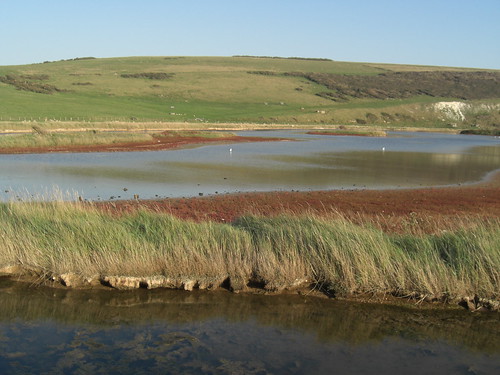
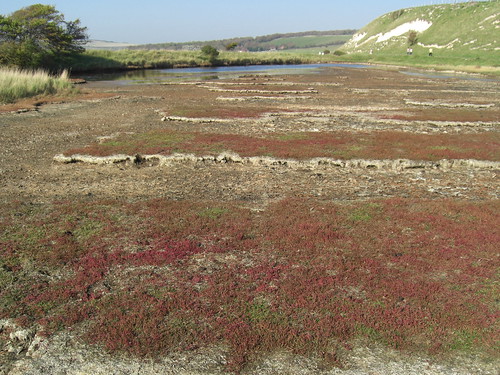

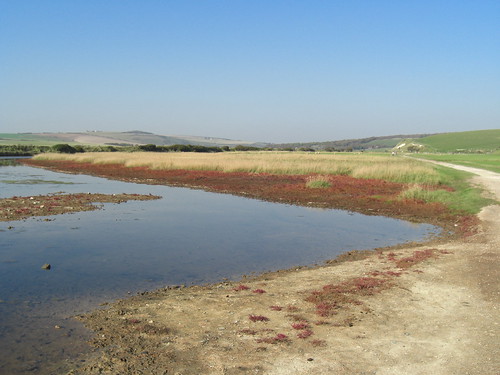

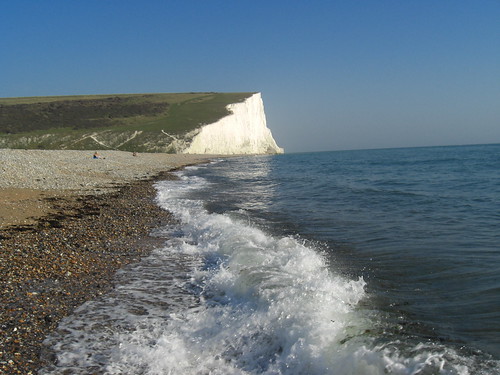
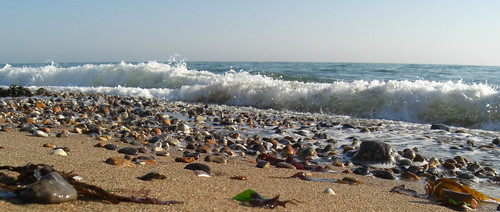
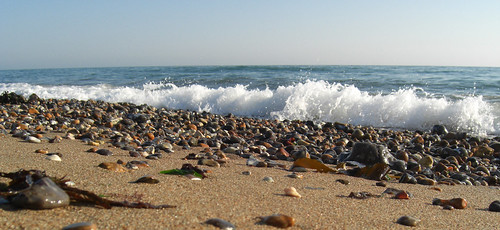
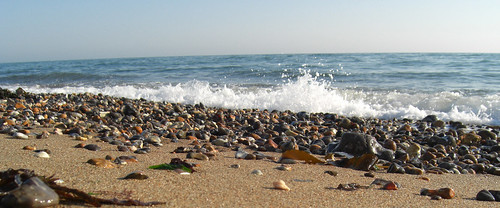
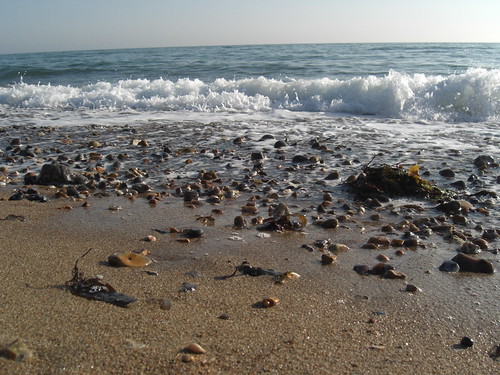
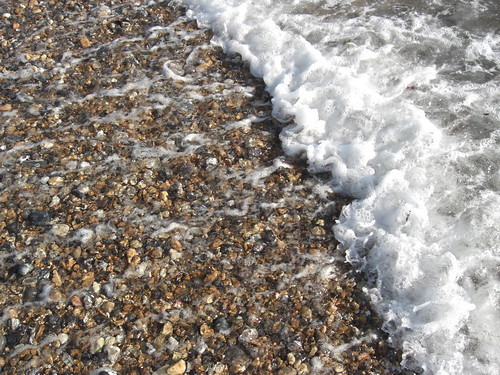
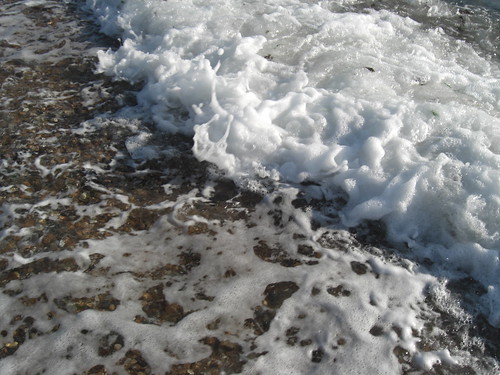

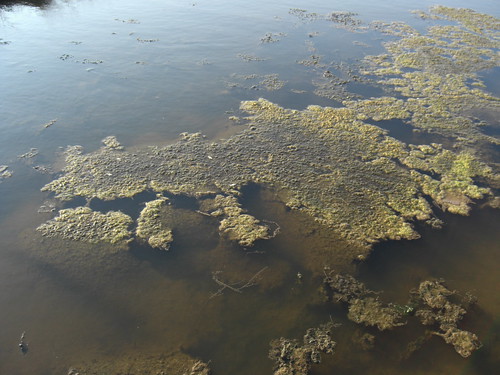
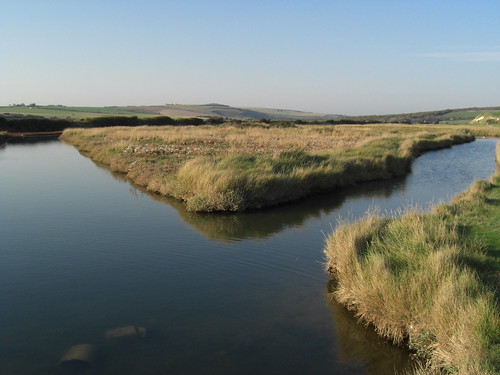
Below are a selection of the photos that I took instead. It's so beautiful at the Seven Sisters, apparently this was the last day of summer weather for this year :-(















Sunday, 2 October 2011
Drift Line Sand Patterns.
Although I've mainly been filming natural generated elements of nature, this is the first time that I managed to capture distinct transient pattern formations which are clearly visible in a linear fashion.
While I previously have been experimenting colourising and adding more visual effects afterwards, I didn't do that with this video. I played around with the audio and added sound effects, but I found the focus on the visuals quite captivating without no sound.
I think it's fascinating that drift line sand patterns are quite similar to patterns found in the desert, only the patterns in the desert occur without the tides of the ocean waves. These patterns also appear more vein like towards the end of the video. This also coincides with an earlier post exploring the ideas of a mathematician called Benoit Mandelbrot: Looking at how natural fractals in the world form the shapes of mountains, coastlines and river basins; the structures of plants, blood vessels and lungs. Click here for the link to that post.
Below are some photos that I also took on the same day. At the moment I now feel that my visual research is becoming very similar to my studio practise.
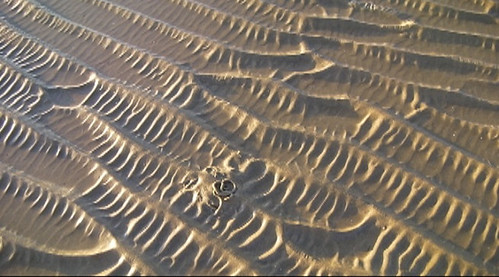
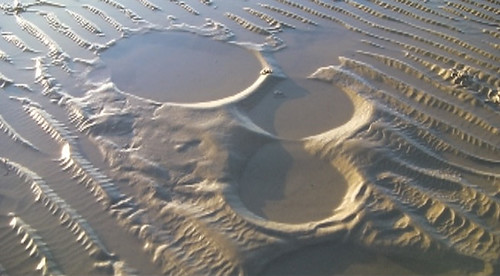
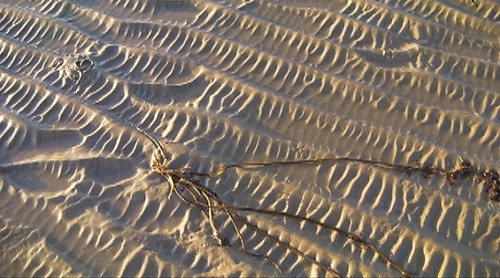
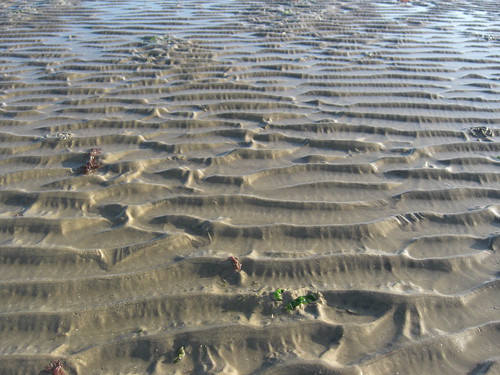
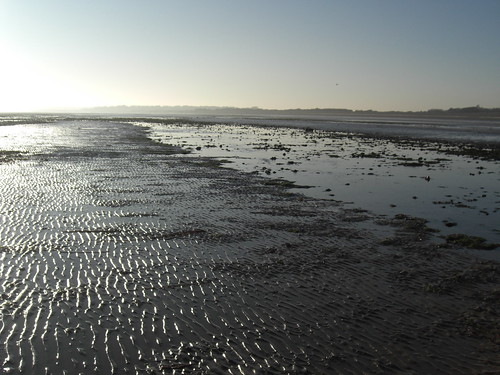
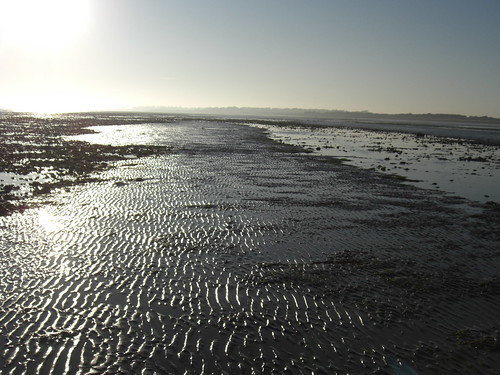
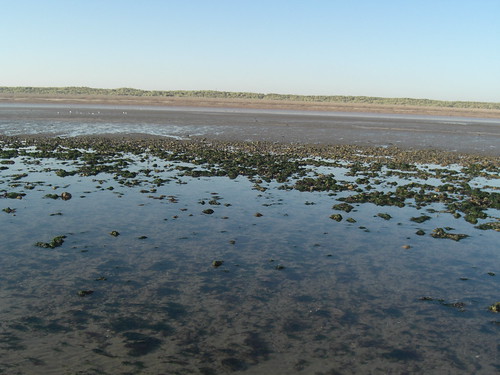
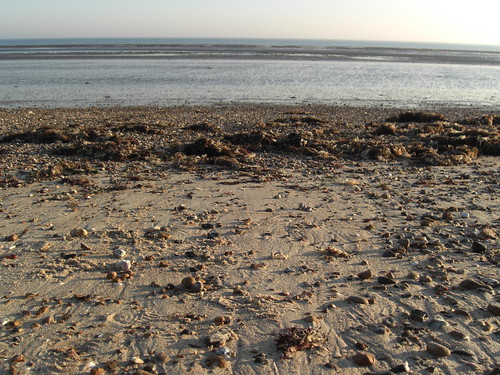
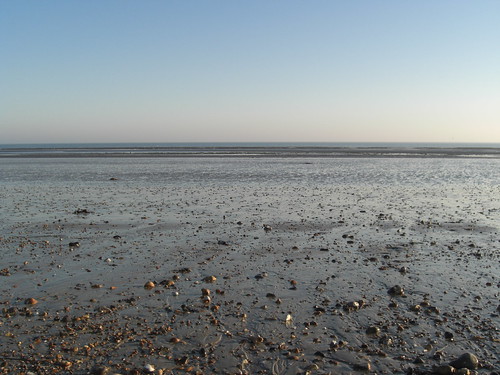
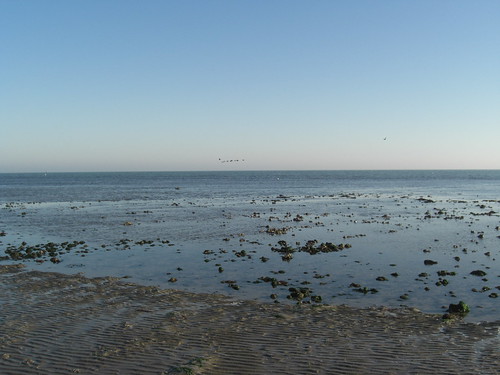
While I previously have been experimenting colourising and adding more visual effects afterwards, I didn't do that with this video. I played around with the audio and added sound effects, but I found the focus on the visuals quite captivating without no sound.
I think it's fascinating that drift line sand patterns are quite similar to patterns found in the desert, only the patterns in the desert occur without the tides of the ocean waves. These patterns also appear more vein like towards the end of the video. This also coincides with an earlier post exploring the ideas of a mathematician called Benoit Mandelbrot: Looking at how natural fractals in the world form the shapes of mountains, coastlines and river basins; the structures of plants, blood vessels and lungs. Click here for the link to that post.
Below are some photos that I also took on the same day. At the moment I now feel that my visual research is becoming very similar to my studio practise.










Sunset
I took these sunset photos as I noticed the clouds looked quite unusual. They reminded me of clouds in Chinese paintings.

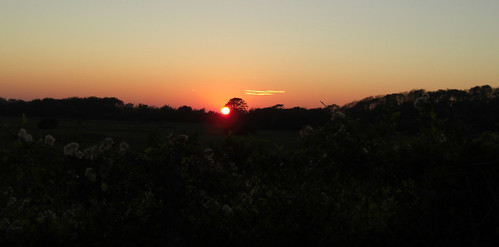
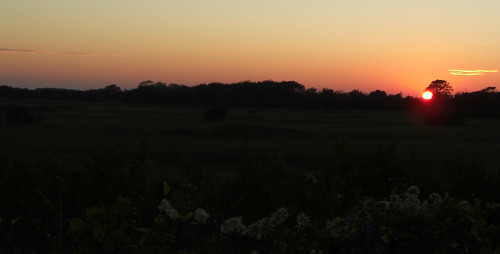



Saturday, 1 October 2011
Data is Nature
Last night I went to see Data is Nature at the Pavilion Theatre. This was curated by Lighthouse to mark the end of this year's Brighton Digital Festival.
This brilliant line-up of audio-visual performers translate nature into immersive digital experiences. Data is Nature features the Brighton premiere of Natures by renowned musician Mira Calix and visual artist Quayola. In this performance, the organic behaviours of plants become part of an audio-visual world where the natural and the artificial coexist harmoniously.
Data is Nature also includes Paul Prudence, a London-based musician and visual artist, known for his stunning audio-visual performances, which use data visualisation and generative techniques to give us striking new views of nature. Lighthouse
While I found Mira Calix and Quayola's performance to be intriguing, this definitely didn't express to me a harmonious link between the natural and the artificial coexisting. From this performance I only felt the tension between the two, but having said that this was about exploring new way of seeing things.
Click here for link to Paul Prudence's blog, it's very interesting :-)
This brilliant line-up of audio-visual performers translate nature into immersive digital experiences. Data is Nature features the Brighton premiere of Natures by renowned musician Mira Calix and visual artist Quayola. In this performance, the organic behaviours of plants become part of an audio-visual world where the natural and the artificial coexist harmoniously.
Data is Nature also includes Paul Prudence, a London-based musician and visual artist, known for his stunning audio-visual performances, which use data visualisation and generative techniques to give us striking new views of nature. Lighthouse
While I found Mira Calix and Quayola's performance to be intriguing, this definitely didn't express to me a harmonious link between the natural and the artificial coexisting. From this performance I only felt the tension between the two, but having said that this was about exploring new way of seeing things.
Click here for link to Paul Prudence's blog, it's very interesting :-)
Friday, 23 September 2011
Interview with Philip Galanter
Philip Galanter's paper titled: What is Generative Art was the first intensive research paper on the subject that I came across. I was very pleased that he was happy to be interviewed.
Philip's areas of interest include generative art, physical computing, sound art and music, complexity science, and art theory. He teaches graduate studios in generative art and physical computing at Texas A&M University. His artistic work includes generative hardware systems of his own design, installations, digital fine art prints, and light-box transparencies. His work has been shown in the United States, Canada, the Netherlands, and Peru. As a curator he collaborated with others to create ArtBots in New York City in 2002 and 2003, and COMPLEXITY, the first major fine art exhibition focusing on complex systems and emergence. Website: philipgalanter.com
Interview with Philip Galanter:
KJ: Could you describe a little about your background and how you became interested in generative art?
PG: The first arts activity that I participated in in a serious way was electronic music. This was back in the 1970's using analog synthesizers. The part I found most fascinating, along with the notions of timbral composition, was that the synthesizer could play itself. By using a sample and hold unit, for example, one could create random voltages or cascading stair-step voltages that would in turn determine pitch, loudness, stereo placement, and so on. So I would create these systems by patching together various modules and then sit back and listen. The term "generative art" wasn't used then, but that's what it was.
I went through a long period of pursuing various musical interests including punk, industrial, and various experimental and performance art forms. Little of that was generative. It was the more typical group collaboration style of manual music production.
Around 1990 I tired of collaboration and was trying to figure out a way I could affordably create live electronic music as a solo performer. One concern I had was that it would be terribly boring to watch; just a guy pushing buttons and tweaking knobs. So I began experimenting with analog video feedback as a fast way to create lots of visuals that I could project. That led me to the edge, and I fell over and became more focused on visual art. And with video feedback I was once again back in the generative realm. Because for years my day job had been scientific programming, and even included non-artistic graphics, it was only natural that I would soon turn to digital tools for generative visual art.
KJ: Is there a reason that you use generative software as part of the piece as a message within your own art work, or do you just use generative software as a process for making the work and it has no relevance to the actual art work? I was particularly thinking of some of your generative animations: worms, blobs, and light box drawing as I would imagine using generative software played an important aspect within the meaning of this work, but I'm also curious about your other generative artworks too.
PG: The question as to whether the generative approach is merely pragmatic or whether it is embedded in the work as content is a very interesting one. Initially my interest was purely pragmatic. In support of live performance I needed more visual material than I could practically create by hand, and so using generative systems was really the only way I could go. At the time my goal was to use analog video feedback in such a way that it didn't look like all the other video feedback that had been created by then. I didn't want it to be about the way it was made. It was only later that I realized that video feedback is a chaotic system and a legitimate intention could be the exploration and presentation of chaos theory.
As my interest in generative systems grew I became aware of complexity science. It's essentially an attempt to theorize across a diversity of domains and produce models and abstractions that can apply to what previously seemed to be unrelated systems. For example, is there something we can say about ant hills, the human brain, and weather systems that helps us understand all three? At the time this was pretty exotic stuff, but now to some extent it's become absorbed into the popular culture. Unfortunately the science of complexity is more subtle and complicated than the popular interpretation and folks tend to underestimate the depth of the complexity waters.
Anyway I came to realize that generative art is all about using systems, and complexity science is all about understanding systems. I came up with a generative art theory using complexity theory as a context for considering systems. This led to a paper "What is Generative Art" that contains the most widely cited definition of generative art.
Over the years my work has increasingly become a sort of meditation on complex systems, and so the pieces are about the very generative systems they contain. The art is the system and the system is the art. I refer to this as "truth to process" in some recent writing.
KJ: Are there any art movements that have influenced your work?
PG: I believe that art proceeds by accretion. Art movements are never lost or reversed, rather each new art movement layers itself over the last. So in a way every art movement is still present and influential. But we all have our favorites. Very little art before the 20th century excites me. For me Mondrian and Pollock are huge influences, with Mondrian contributing the Apollonian principle in art and Pollock the Dionysian. But really the entire pantheon of abstract expressionists is huge for me. Minimal and conceptual art is, not surprisingly, a big influence on me. I understand and enjoy pop art although it's hard to see in my work. Maybe it's visible in my use of unsubtle fully saturated color. Warhol appeals to me both as a visual artist, but also in terms of his contributions to film and music. Without Andy there would have been no Velvet Underground, and they influenced so many others it's hard to imagine what rock music would have been like without them. Music has probably influenced me more than other visual artists, although it's hard to pinpoint exactly how that comes out.
Back when I did purely music my approach was much more Dionysian. My visual art has been mostly Apollonian. It may be time for the pendulum to swing again.
KJ: Are there any reasons why you choose to simulate nature?
PG: Artists have always learned from nature. Of course in the postmodern era saying such a thing is viewed as being, at best, quaint. But increasingly folks have tired of postmodernism. There is now a whole generation of young artists embracing science and technology as not only a useful source of tools, but as a cool and creative subculture. So you have the arduino and Maker Faire and folks wiring up kinects to sound chips and so on. There's even this notion of art-science as a hybrid discipline with a claim to its own identity. So artists have always learned from nature and so have scientists.
If you want to create art using complexity and generative systems why not study under the master? That would be nature. In my work I'm not seeking to simulate nature so much as to learn from it. Some of my work has biomorphic form in it, but I don't view that as being essential to the work. Two recent pieces, RGBCA 1 and RGBCA 2, are much more minimal in style; cubes, hemispheres, lines. But they are still generative, they are still systems, and they are about the systems they are.
Website: philipgalanter.com
Philip's areas of interest include generative art, physical computing, sound art and music, complexity science, and art theory. He teaches graduate studios in generative art and physical computing at Texas A&M University. His artistic work includes generative hardware systems of his own design, installations, digital fine art prints, and light-box transparencies. His work has been shown in the United States, Canada, the Netherlands, and Peru. As a curator he collaborated with others to create ArtBots in New York City in 2002 and 2003, and COMPLEXITY, the first major fine art exhibition focusing on complex systems and emergence. Website: philipgalanter.com
Interview with Philip Galanter:
KJ: Could you describe a little about your background and how you became interested in generative art?
PG: The first arts activity that I participated in in a serious way was electronic music. This was back in the 1970's using analog synthesizers. The part I found most fascinating, along with the notions of timbral composition, was that the synthesizer could play itself. By using a sample and hold unit, for example, one could create random voltages or cascading stair-step voltages that would in turn determine pitch, loudness, stereo placement, and so on. So I would create these systems by patching together various modules and then sit back and listen. The term "generative art" wasn't used then, but that's what it was.
I went through a long period of pursuing various musical interests including punk, industrial, and various experimental and performance art forms. Little of that was generative. It was the more typical group collaboration style of manual music production.
Around 1990 I tired of collaboration and was trying to figure out a way I could affordably create live electronic music as a solo performer. One concern I had was that it would be terribly boring to watch; just a guy pushing buttons and tweaking knobs. So I began experimenting with analog video feedback as a fast way to create lots of visuals that I could project. That led me to the edge, and I fell over and became more focused on visual art. And with video feedback I was once again back in the generative realm. Because for years my day job had been scientific programming, and even included non-artistic graphics, it was only natural that I would soon turn to digital tools for generative visual art.
KJ: Is there a reason that you use generative software as part of the piece as a message within your own art work, or do you just use generative software as a process for making the work and it has no relevance to the actual art work? I was particularly thinking of some of your generative animations: worms, blobs, and light box drawing as I would imagine using generative software played an important aspect within the meaning of this work, but I'm also curious about your other generative artworks too.
PG: The question as to whether the generative approach is merely pragmatic or whether it is embedded in the work as content is a very interesting one. Initially my interest was purely pragmatic. In support of live performance I needed more visual material than I could practically create by hand, and so using generative systems was really the only way I could go. At the time my goal was to use analog video feedback in such a way that it didn't look like all the other video feedback that had been created by then. I didn't want it to be about the way it was made. It was only later that I realized that video feedback is a chaotic system and a legitimate intention could be the exploration and presentation of chaos theory.
As my interest in generative systems grew I became aware of complexity science. It's essentially an attempt to theorize across a diversity of domains and produce models and abstractions that can apply to what previously seemed to be unrelated systems. For example, is there something we can say about ant hills, the human brain, and weather systems that helps us understand all three? At the time this was pretty exotic stuff, but now to some extent it's become absorbed into the popular culture. Unfortunately the science of complexity is more subtle and complicated than the popular interpretation and folks tend to underestimate the depth of the complexity waters.
Anyway I came to realize that generative art is all about using systems, and complexity science is all about understanding systems. I came up with a generative art theory using complexity theory as a context for considering systems. This led to a paper "What is Generative Art" that contains the most widely cited definition of generative art.
Over the years my work has increasingly become a sort of meditation on complex systems, and so the pieces are about the very generative systems they contain. The art is the system and the system is the art. I refer to this as "truth to process" in some recent writing.
KJ: Are there any art movements that have influenced your work?
PG: I believe that art proceeds by accretion. Art movements are never lost or reversed, rather each new art movement layers itself over the last. So in a way every art movement is still present and influential. But we all have our favorites. Very little art before the 20th century excites me. For me Mondrian and Pollock are huge influences, with Mondrian contributing the Apollonian principle in art and Pollock the Dionysian. But really the entire pantheon of abstract expressionists is huge for me. Minimal and conceptual art is, not surprisingly, a big influence on me. I understand and enjoy pop art although it's hard to see in my work. Maybe it's visible in my use of unsubtle fully saturated color. Warhol appeals to me both as a visual artist, but also in terms of his contributions to film and music. Without Andy there would have been no Velvet Underground, and they influenced so many others it's hard to imagine what rock music would have been like without them. Music has probably influenced me more than other visual artists, although it's hard to pinpoint exactly how that comes out.
Back when I did purely music my approach was much more Dionysian. My visual art has been mostly Apollonian. It may be time for the pendulum to swing again.
KJ: Are there any reasons why you choose to simulate nature?
PG: Artists have always learned from nature. Of course in the postmodern era saying such a thing is viewed as being, at best, quaint. But increasingly folks have tired of postmodernism. There is now a whole generation of young artists embracing science and technology as not only a useful source of tools, but as a cool and creative subculture. So you have the arduino and Maker Faire and folks wiring up kinects to sound chips and so on. There's even this notion of art-science as a hybrid discipline with a claim to its own identity. So artists have always learned from nature and so have scientists.
If you want to create art using complexity and generative systems why not study under the master? That would be nature. In my work I'm not seeking to simulate nature so much as to learn from it. Some of my work has biomorphic form in it, but I don't view that as being essential to the work. Two recent pieces, RGBCA 1 and RGBCA 2, are much more minimal in style; cubes, hemispheres, lines. But they are still generative, they are still systems, and they are about the systems they are.
Philip Galanter
Assistant Professor
Department of Visualization
Texas A&M University
C108 Langford Center
3137 TAMU
College Station, TX 77843-3137
Monday, 19 September 2011
Slow Waves
I filmed these waves for my visual research as I found them quite fascinating due to their slowness and natural calming meditive effect.
Labels:
Generative Natural Elements,
Visual Research,
Waves
Saturday, 17 September 2011
Sunny Day Rainbow
During the week while I was taking photos for my visual research, a rainbow appeared. It was quite unusual since it was a totally sunny day. This was my first rainbow that I've ever seen without no rain. The rainbow was quite faint and can be seen in a couple of these photos if you look carefully :-)
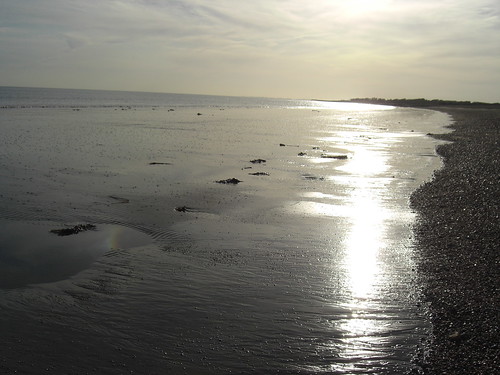
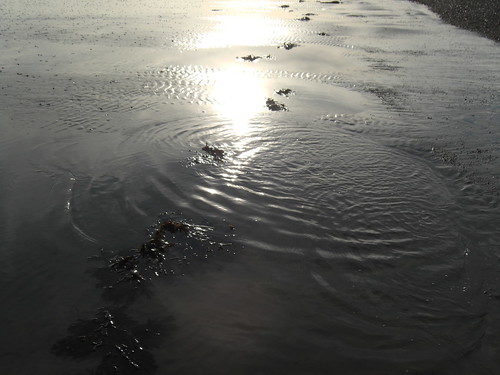
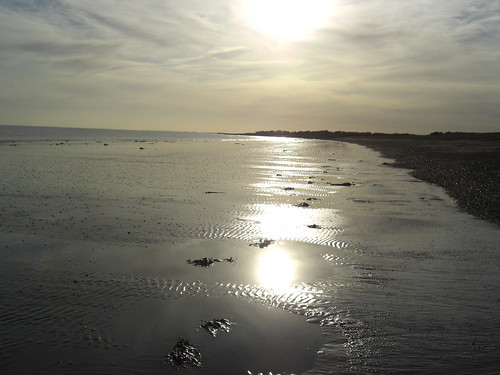
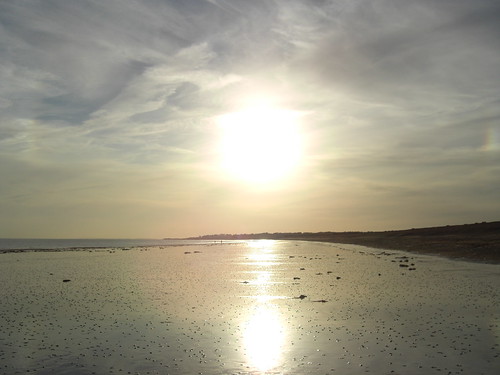
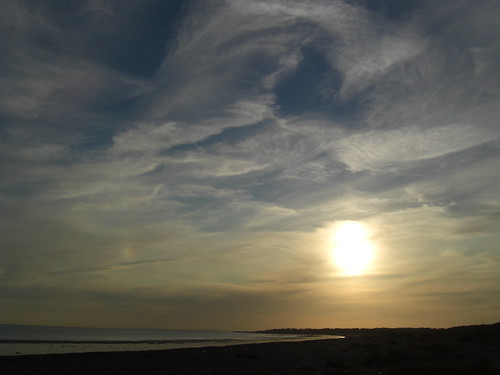





Tuesday, 13 September 2011
Interview with Shardcore.
During this year's 2011 Brighton Festival I went to see an exhibition at the Old Market called The Consciousness Engine by artist's Shardcore and Sam Hewitt. I found this to be such a fascinating experience, it has left me thinking about consciousness, freedom and artificial life forms ever since. For my previous blog post on this exhibition click here.
Interview with Shardcore:
KJ: Your video in the basement of the market place was made using generative software. Was there a reason to use generative software as part of the piece as a message within your work, or did you just use generative software as a process for making the work and it had no relevance to the actual work?
S: The use of a generative system was integral to the piece. It operates on two levels, firstly as representing one facet of conscious experience - that it is continuous, mutable experience (a feat which would either require a huge amount of scripting/editing without a generative system). Secondly, it allows for the content to appear as truly novel, just as in the conscious mind, no two moments are the same - we wanted to create a machine that, while bounded to the limits of the source content, could still produce new juxtapositions that we were unable to predict.
Looking more broadly, generative systems allow the artist to step away from the explicit form of the work, and into the realm of meta-creation - making the rules that govern the creative process, rather than explicitly creating the end piece itself. By loosening the grip on the end product, the artist is able to use the outcomes of a generative system to inform the manipulation of that system; the artist becomes a benevolent curator of the work, rather than the direct creator of the end product.
KJ: Would you say that as the artist you wanted to explore consciousness via an artificial source (the computer, core of the engine) using the process know as generative art to express and simulate existence of the natural world?
S: We wanted to explore consciousness, and that exists in a place beyond what is generally considered 'the natural world'. So, in that sense, we were never aiming to create a naturalistic environment.
The generative nature of the system, for me, was far more about creating an experience in flux, just as the conscious mind is constantly in flux - it makes no sense to take a snapshot of a mind, it's very nature is one of change - and that's why it had to be a generative machine. I wanted the viewer to be an involved observer of a simulated mind, and for that, it was essential that it was constantly changing. If we had used a pre-composed, pre-recorded film, it would have been a different piece entirely.
In building the piece, I wanted to avoid existing AI paradigms and produce a purposefully (semi-controlled) chaotic system. AI generally concerns itself with simulation of specific parts of the human mind to appear 'intelligent' in a rather narrowly defined sense.
The Consciousness Engine exists not as an end-point, but as a symbiotic process between the machine and the viewer. The viewer needs to engage their conscious mind directly with the machine for the work to exist. When no one is observing it, it's just a machine talking to itself in an empty room.
Conscious experience is primarily a constructive process - what you 'experience' of the world is mainly a projection of psychological expectations. With this piece I wanted to draw out the mind behind the expectations, the machine provided a method for doing this.
My hope was that the piece, along with the journey of installations before reaching the machine, would guide the viewer into a place where they were provoked to consider the nature of their own consciousness, and not simply assume the role of passive observer.
KJ: I found that the Core of the Engine (computer) related more to my subconscious mind. It felt like I was experiencing a dream filled full of random questions and different locations around Brighton, which were reminiscent of some of my own thoughts and memories. I'm curious was the core of the engine both the subconscious merged with the conscious mind?
S: The part of our mind that we live in, our wakeful consciousness, is but a small part of the machinations of our brains. Indeed, experiments show that the conscious mind is often 'the last to know' about what we, as individual functional entities, are doing.
So, rather than considering the subconscious in a Freudian way, I tend to see the conscious mind as a machine struggling to make sense of a series of events coming from both 'external sources' (what we see, hear, taste etc) and 'internal sources' (our memories, expectations and desires) - I guess you could consider the latter as 'the subconscious', but I tend to see them as an integrated system, with consciousness as the final layer.
It was important that the video sources used were of locations and events that may be familiar, this allows the piece to feel more like a mind like occupying a coherent space, and also to use these experiences to provoke memories and sensations in the viewer who may occupy a set of spaces and experiences.
The subconscious is generally seen as inaccessible, only visible via oblique projections, such as dream analysis. For this piece we wanted it to consider the direct conscious experience of the now.
For link to The Consciousness Engine by Shardcore and Sam Hewitt click here.
Interview with Shardcore:
KJ: Your video in the basement of the market place was made using generative software. Was there a reason to use generative software as part of the piece as a message within your work, or did you just use generative software as a process for making the work and it had no relevance to the actual work?
S: The use of a generative system was integral to the piece. It operates on two levels, firstly as representing one facet of conscious experience - that it is continuous, mutable experience (a feat which would either require a huge amount of scripting/editing without a generative system). Secondly, it allows for the content to appear as truly novel, just as in the conscious mind, no two moments are the same - we wanted to create a machine that, while bounded to the limits of the source content, could still produce new juxtapositions that we were unable to predict.
Looking more broadly, generative systems allow the artist to step away from the explicit form of the work, and into the realm of meta-creation - making the rules that govern the creative process, rather than explicitly creating the end piece itself. By loosening the grip on the end product, the artist is able to use the outcomes of a generative system to inform the manipulation of that system; the artist becomes a benevolent curator of the work, rather than the direct creator of the end product.
KJ: Would you say that as the artist you wanted to explore consciousness via an artificial source (the computer, core of the engine) using the process know as generative art to express and simulate existence of the natural world?
S: We wanted to explore consciousness, and that exists in a place beyond what is generally considered 'the natural world'. So, in that sense, we were never aiming to create a naturalistic environment.
The generative nature of the system, for me, was far more about creating an experience in flux, just as the conscious mind is constantly in flux - it makes no sense to take a snapshot of a mind, it's very nature is one of change - and that's why it had to be a generative machine. I wanted the viewer to be an involved observer of a simulated mind, and for that, it was essential that it was constantly changing. If we had used a pre-composed, pre-recorded film, it would have been a different piece entirely.
In building the piece, I wanted to avoid existing AI paradigms and produce a purposefully (semi-controlled) chaotic system. AI generally concerns itself with simulation of specific parts of the human mind to appear 'intelligent' in a rather narrowly defined sense.
The Consciousness Engine exists not as an end-point, but as a symbiotic process between the machine and the viewer. The viewer needs to engage their conscious mind directly with the machine for the work to exist. When no one is observing it, it's just a machine talking to itself in an empty room.
Conscious experience is primarily a constructive process - what you 'experience' of the world is mainly a projection of psychological expectations. With this piece I wanted to draw out the mind behind the expectations, the machine provided a method for doing this.
My hope was that the piece, along with the journey of installations before reaching the machine, would guide the viewer into a place where they were provoked to consider the nature of their own consciousness, and not simply assume the role of passive observer.
KJ: I found that the Core of the Engine (computer) related more to my subconscious mind. It felt like I was experiencing a dream filled full of random questions and different locations around Brighton, which were reminiscent of some of my own thoughts and memories. I'm curious was the core of the engine both the subconscious merged with the conscious mind?
S: The part of our mind that we live in, our wakeful consciousness, is but a small part of the machinations of our brains. Indeed, experiments show that the conscious mind is often 'the last to know' about what we, as individual functional entities, are doing.
So, rather than considering the subconscious in a Freudian way, I tend to see the conscious mind as a machine struggling to make sense of a series of events coming from both 'external sources' (what we see, hear, taste etc) and 'internal sources' (our memories, expectations and desires) - I guess you could consider the latter as 'the subconscious', but I tend to see them as an integrated system, with consciousness as the final layer.
It was important that the video sources used were of locations and events that may be familiar, this allows the piece to feel more like a mind like occupying a coherent space, and also to use these experiences to provoke memories and sensations in the viewer who may occupy a set of spaces and experiences.
The subconscious is generally seen as inaccessible, only visible via oblique projections, such as dream analysis. For this piece we wanted it to consider the direct conscious experience of the now.
For link to The Consciousness Engine by Shardcore and Sam Hewitt click here.
Monday, 12 September 2011
Clouds of the Sun.
For this experiment I first filmed clouds in the sky. I then speeded up the video and original audio sound by the same amount. The speeded sound reminded me of flames igniting so I colourised some areas to appear flame like.
Friday, 9 September 2011
Sun
Phoenix Gallery: Solar Systems by Semiconductor.
Today I visited the Phoenix Gallery in Brighton, to see an exhibition called Solar Systems by Semiconductor (Ruth Jarman and Joe Gerhardt). I was very impressed to say the least. Such amazing photography of naturally occurring generative elements of nature. I also found this exhibition brilliant for my contextual research :-) While I did take video clips of this exhibition which I was going to put on here. I have since found their site: click here. Below is one of the films that I saw at the today. Here is a link to their other films.
Solar Systems is Semiconductor's first major exhibition in the South East for four years. Three moving image works explore the mechanics of observing the Sun, from the vantage point of the Earth to our orbit in outer space. These works are emblematic of the artists’ ongoing investigation of the natural world, which has resulted in major works on astronomy (Brilliant Noise, 2006), and geology (Worlds in the Making, 2011). Their unique approach has won them fellowships and residencies in significant scientific locations such as NASA’s Space Sciences Lab, the Galapagos Islands and the Smithsonian National Museum of Natural History.
Solar Systems is curated by Lighthouse in partnership with Phoenix Brighton for Brighton Brighton Digital Festival 2011.
Heliocentric excerpt 2 from Semiconductor on Vimeo.
Solar Systems is Semiconductor's first major exhibition in the South East for four years. Three moving image works explore the mechanics of observing the Sun, from the vantage point of the Earth to our orbit in outer space. These works are emblematic of the artists’ ongoing investigation of the natural world, which has resulted in major works on astronomy (Brilliant Noise, 2006), and geology (Worlds in the Making, 2011). Their unique approach has won them fellowships and residencies in significant scientific locations such as NASA’s Space Sciences Lab, the Galapagos Islands and the Smithsonian National Museum of Natural History.
Solar Systems is curated by Lighthouse in partnership with Phoenix Brighton for Brighton Brighton Digital Festival 2011.
Monday, 5 September 2011
Cloud Formations Experiments 2 & 3
I was thinking about how time is relative to the individual, so I decided to experiment with different timings and patterns.
I left my camcorder faced up at the sky and filmed clouds moving for about an hour. I used the original film and audio for track one. I then made a copy of this and separated the audio from the visuals as I wanted to speed up the visuals and stretch out the sounds for track two. I used the cookie cutter tool in the first track to create the circle grid effect and placed the other track below so that it could be viewed through the grid. The original film of the clouds can be seen moving on the actual pattern of the grid. The original sound consisted of the natural background sound, you can hear, cars, people walking, seagulls, and the sound of the wind etc. The stretched sound has quite a warped effect. The changing lighting is not an effect, it's just the moving clouds blocking out the sun :-)
For the second experiment below I used the same method but only added in another layer of video and set it to a different speed (more or less in the middle of the other two). I then cookie cut squares inside the circles to create three different timings of the same visuals, and left the same two different timings of the sounds.
I left my camcorder faced up at the sky and filmed clouds moving for about an hour. I used the original film and audio for track one. I then made a copy of this and separated the audio from the visuals as I wanted to speed up the visuals and stretch out the sounds for track two. I used the cookie cutter tool in the first track to create the circle grid effect and placed the other track below so that it could be viewed through the grid. The original film of the clouds can be seen moving on the actual pattern of the grid. The original sound consisted of the natural background sound, you can hear, cars, people walking, seagulls, and the sound of the wind etc. The stretched sound has quite a warped effect. The changing lighting is not an effect, it's just the moving clouds blocking out the sun :-)
For the second experiment below I used the same method but only added in another layer of video and set it to a different speed (more or less in the middle of the other two). I then cookie cut squares inside the circles to create three different timings of the same visuals, and left the same two different timings of the sounds.
Labels:
clouds,
Generative Natural Elements,
Studio Practise
MA Show at Camberwell
At the weekend I went to see the MA show at Camberwell and was very impressed, click here for link. There were so many amazing art works that I found it hard to have a favourite.
Monday, 29 August 2011
Interview with Joseph Nechvatal
I recently asked artist Joseph Nechvatal if I could interview him for my research paper. Below is a transcript of the interview:
KJ: Is there a reason that you use generative software as part of the piece as a message within your art work, or do you just use generative software as a process for making the work and it has no relevance to the actual art work? I was particularly thinking of your computer virus project ii as I would imagine using generative software played an important aspect within the meaning of this work, but I'm also curious about your other generative artworks too, cheers.
JN: Indeed I did not come to using generative software for its own sake or from an interest in the formal properties of generative software. After my first paintings were created using robot-assisted means in 1986, I sought to create paintings around the computer-assisted concept of the virus. So I developed this idea by considering an image as a host - used to host viruses: active agents whose role it is to manipulate and degrade the information contained in the image. The negative connotations of the HIV virus as a vector of disease is reflected in the principle of degradation of the image. But here, the virus is also the basis of a creative process, producing newness in reference to vector genetic information in biological systems.
KJ: I assumed this was the case with your computer virus ii project. Has there ever been a time when you employed generative art as just a process?
JN: No never.
KJ: Could you describe a little about your background and how you became interested in generative art?
JN: Sure. I took a BFA at Southern Illinois University in Carbondale first, making art in a permissive post-minimalist environment. I then went to Cornell University with the idea of getting an MFA, but found the art department there years behind Southern Illinois University, so I left and went to New York and Columbia University where I worked towards an MPhil, studying with Arthur Danto, most notably. In the late 90s I earned a Ph.D. in the philosophy of art and new technology at Roy Ascott's Centre for Advanced Inquiry in the Interactive Arts (CAiiA) at The University of Wales College. That was a fantastic intellectual experience. My research was focused on the immersive ideals behind virtual reality. You can examine the introduction and download the full thesis as a pdf file if you wish.
My involvement with Alife comes out of my artistic post-conceptual background. From 1991-1993 I worked as artist-in-resident at the Louis Pasteur Atelier and the Saline Royale / Ledoux Foundation's computer lab in Arbois, France on what I came to call The Computer Virus Project. This was my first experiment with computer viruses as a creative ploy. I created a series of digital paintings and a computer animation from this process. I worked there with Jean-Philippe Massonie at the Laboratoire MIS at the Université de Franche-Comté on the initial software - which was written in Basic. At the time I would launch a viral attack into the host image - which was my body of visual work accomplished up to that time. However there was nothing to see as the computer virus went through its procedures until I would check to see what had happened overnight.
The AIDS virus was impacting on me emotionally at the time, so it made sense to move in that direction. I wanted to overcome the fear I was feeling - and it expressed my attraction towards things beauté tragique. I think that the life/non-life idea inherent in the viral situation is fascinating. The text The Electronic Revolution by William S. Burroughs from 1970 was also key to the idea. In it he theorizes that the written word was literally a virus that made spoken word possible.
Then in 2002 I extended that artistic exploration into the field of viral artificial life through my collaboration with the programmer Stéphane Sikora. I met Stéphane at a conference organized by Prof. Jean-Claude Heudin called Virtual Worlds 2000, which was held at Pôle Universitaire Léonard de Vinci in Paris. The conference's goals, which, like the first Virtual Worlds conference in 1998, were to develop a discourse around the merging of Virtual Reality (VR) and Artificial Life (ALife) (what one might call VRALife). This involved the study of synthetic systems that exhibit behaviors characteristic of natural living systems inside virtual reality worlds.
I fell into conversation with Stéphane and from that we launched into a collaboration intended on extending my previous exploration with computer software modeled on the viral.
KJ: You were inspired by A-life work of John Conway. Is there anyone else's work that has particularly inspired you too?
JN: By the general cellular automata work of John von Neumann, by the genetic programming algorithms of John Koza and the auto-destructive art of Gustav Metzger.
KJ: Are there any art movements that have influenced your work?
JN: Dada, for sure. Also Conceptual Art.
KJ: Are there any reasons why you choose to simulate nature?
JN: It started when I was a sophomore at University, pursuing a degree in Sociology. I was deeply involved in the political/social issues of the early 1970s; i.e. the anti-war, woman’s liberation and equal rights movements. I was home in Chicago for the summer, working at some shit job to pay for my University expenses. Art had been a hobby-interest with me up to that point. Anyway, I was riding around downtown Chicago on a motorcycle, somewhat in a psychic funk. As I zoomed pass some cathedral, a large illuminated stain-glass window caught my eye. It was an intense moment of color in a black night. Something told me then and there that the way to social change was the way of nature in art - in that art addresses the natural inner unique individual rather than the group, the sociological statistical. In that sense I saw art as a means to foster social change from nature - bottom-up, rather than top down, if you will.
KJ: In an interview with Tom Barbalet for Biota.org you mentioned:
The Alife approach is only a painting tool or utilitarian expression in its manifestation. For me, my work with Alife is an abstract way of doing philosophically based art. Cyborg imagery in pop culture, I suppose, fruitfully fertilized this aesthetic effort by imaginatively inviting me to experience my ontology through losing track of my body and becoming what seems to be pure viral consciousness.
Do you mean a consciousness that exists without a body, a consciousness that has been invaded by another or did you have some other meaning in mind?
Could you explain what you mean by 'pure viral consciousness'?
JN: The history of art and the history of technology are often marked by ruptures. Most histories, overlook moments where deep fusion occurs, as I see happening now with viractuality. Perhaps, another temporal model for cultural consciousness is needed. Something other than the, majestic forward and upward thrusting model of evolution. Something more humbly folded in, on itself (as Deleuze suggests). Or perhaps something even more insinuatingly penetrating – as, in a viral-host model. I have chosen the viral model – so let us now consider the activities of the, viractual as a surge of emergent and embedded critical consciousness that ofers us a formal, clarity true to our age.
After a long period of temporal disjunctions following the demise of the modernist project and, the excessive abuses of the post-modernist non-project; I wish to now suggest that a new, clarifying paradigm has emerged based not, however, on the ideals of the raw, the pure or the, reduced - but rather on the internal tic-tic-tic bomb time of the embedded and patient viral, attack. So I am suggesting here a seething project of critique within critique that re-energizes, the broken gaps of temporal displacement that followed the demise of modernism and the, appearance of now listless – super fragmented – irresponsible – glut of post-modern deconstruction.
When looking at cultural production through the paradigm of the viral viractual, many former, binary oppositions fail to function in a stable way - and start to pulse – transfusing, consciousness. Most basically, even the defnitions of life and death are destroyed by this model;, as a biological virus is precisely neither alive nor not-alive – as it depends for its existence totally, on it's host's viability. The seeing-power of the host/parasite model alone must not escape us. A, virus cannot – and does not – exist alone. It exists solely by entering in and coupling. So when, we add the once binary defnitions of virtual and actual into the voluptuous viral model of, existence - and observe how they interact - a form of both/and fusion diference appears, dominant within the scope of the viractual lens.
KJ: I have read about the concept of viractual, which strives to create an interface between the biological and the virtual. I think most people would think of a keyboard or mouse as an interface, but would you also consider a program to be viractual?
JN: I think programing that leans towards the genetic programming can be. As you may know, genetic programming is a technique for writing code in a computer program based on artifcial intelligence that uses an algorithm-based method that takes its programming cues from biology. In my case from the biology of the virus. Indeed, for me, bio-tech genetic programming as applied to the traditions of painting and art music is so important to the ideas of viral viractuality that it may be said to be emblematic of it. This because it represents the seminal function of viractuality: that activity that occurs between the wild real-time and the captured archived.
KJ: Thanks so much, hope you have a good weekend.
JN: Same to Kay.
For more information on Joseph Nechvatal:
Website: http://www.nechvatal.net/
Blog: http://post.thing.net/blog/244
New book: Immersion Into Noise: http://www.openhumanitiespress.org/immersion-into-noise.html
leçOns de l'utopie 2011
KJ: Is there a reason that you use generative software as part of the piece as a message within your art work, or do you just use generative software as a process for making the work and it has no relevance to the actual art work? I was particularly thinking of your computer virus project ii as I would imagine using generative software played an important aspect within the meaning of this work, but I'm also curious about your other generative artworks too, cheers.
JN: Indeed I did not come to using generative software for its own sake or from an interest in the formal properties of generative software. After my first paintings were created using robot-assisted means in 1986, I sought to create paintings around the computer-assisted concept of the virus. So I developed this idea by considering an image as a host - used to host viruses: active agents whose role it is to manipulate and degrade the information contained in the image. The negative connotations of the HIV virus as a vector of disease is reflected in the principle of degradation of the image. But here, the virus is also the basis of a creative process, producing newness in reference to vector genetic information in biological systems.
KJ: I assumed this was the case with your computer virus ii project. Has there ever been a time when you employed generative art as just a process?
JN: No never.
KJ: Could you describe a little about your background and how you became interested in generative art?
JN: Sure. I took a BFA at Southern Illinois University in Carbondale first, making art in a permissive post-minimalist environment. I then went to Cornell University with the idea of getting an MFA, but found the art department there years behind Southern Illinois University, so I left and went to New York and Columbia University where I worked towards an MPhil, studying with Arthur Danto, most notably. In the late 90s I earned a Ph.D. in the philosophy of art and new technology at Roy Ascott's Centre for Advanced Inquiry in the Interactive Arts (CAiiA) at The University of Wales College. That was a fantastic intellectual experience. My research was focused on the immersive ideals behind virtual reality. You can examine the introduction and download the full thesis as a pdf file if you wish.
My involvement with Alife comes out of my artistic post-conceptual background. From 1991-1993 I worked as artist-in-resident at the Louis Pasteur Atelier and the Saline Royale / Ledoux Foundation's computer lab in Arbois, France on what I came to call The Computer Virus Project. This was my first experiment with computer viruses as a creative ploy. I created a series of digital paintings and a computer animation from this process. I worked there with Jean-Philippe Massonie at the Laboratoire MIS at the Université de Franche-Comté on the initial software - which was written in Basic. At the time I would launch a viral attack into the host image - which was my body of visual work accomplished up to that time. However there was nothing to see as the computer virus went through its procedures until I would check to see what had happened overnight.
The AIDS virus was impacting on me emotionally at the time, so it made sense to move in that direction. I wanted to overcome the fear I was feeling - and it expressed my attraction towards things beauté tragique. I think that the life/non-life idea inherent in the viral situation is fascinating. The text The Electronic Revolution by William S. Burroughs from 1970 was also key to the idea. In it he theorizes that the written word was literally a virus that made spoken word possible.
Then in 2002 I extended that artistic exploration into the field of viral artificial life through my collaboration with the programmer Stéphane Sikora. I met Stéphane at a conference organized by Prof. Jean-Claude Heudin called Virtual Worlds 2000, which was held at Pôle Universitaire Léonard de Vinci in Paris. The conference's goals, which, like the first Virtual Worlds conference in 1998, were to develop a discourse around the merging of Virtual Reality (VR) and Artificial Life (ALife) (what one might call VRALife). This involved the study of synthetic systems that exhibit behaviors characteristic of natural living systems inside virtual reality worlds.
I fell into conversation with Stéphane and from that we launched into a collaboration intended on extending my previous exploration with computer software modeled on the viral.
KJ: You were inspired by A-life work of John Conway. Is there anyone else's work that has particularly inspired you too?
JN: By the general cellular automata work of John von Neumann, by the genetic programming algorithms of John Koza and the auto-destructive art of Gustav Metzger.
KJ: Are there any art movements that have influenced your work?
JN: Dada, for sure. Also Conceptual Art.
KJ: Are there any reasons why you choose to simulate nature?
JN: It started when I was a sophomore at University, pursuing a degree in Sociology. I was deeply involved in the political/social issues of the early 1970s; i.e. the anti-war, woman’s liberation and equal rights movements. I was home in Chicago for the summer, working at some shit job to pay for my University expenses. Art had been a hobby-interest with me up to that point. Anyway, I was riding around downtown Chicago on a motorcycle, somewhat in a psychic funk. As I zoomed pass some cathedral, a large illuminated stain-glass window caught my eye. It was an intense moment of color in a black night. Something told me then and there that the way to social change was the way of nature in art - in that art addresses the natural inner unique individual rather than the group, the sociological statistical. In that sense I saw art as a means to foster social change from nature - bottom-up, rather than top down, if you will.
KJ: In an interview with Tom Barbalet for Biota.org you mentioned:
The Alife approach is only a painting tool or utilitarian expression in its manifestation. For me, my work with Alife is an abstract way of doing philosophically based art. Cyborg imagery in pop culture, I suppose, fruitfully fertilized this aesthetic effort by imaginatively inviting me to experience my ontology through losing track of my body and becoming what seems to be pure viral consciousness.
Do you mean a consciousness that exists without a body, a consciousness that has been invaded by another or did you have some other meaning in mind?
Could you explain what you mean by 'pure viral consciousness'?
JN: The history of art and the history of technology are often marked by ruptures. Most histories, overlook moments where deep fusion occurs, as I see happening now with viractuality. Perhaps, another temporal model for cultural consciousness is needed. Something other than the, majestic forward and upward thrusting model of evolution. Something more humbly folded in, on itself (as Deleuze suggests). Or perhaps something even more insinuatingly penetrating – as, in a viral-host model. I have chosen the viral model – so let us now consider the activities of the, viractual as a surge of emergent and embedded critical consciousness that ofers us a formal, clarity true to our age.
After a long period of temporal disjunctions following the demise of the modernist project and, the excessive abuses of the post-modernist non-project; I wish to now suggest that a new, clarifying paradigm has emerged based not, however, on the ideals of the raw, the pure or the, reduced - but rather on the internal tic-tic-tic bomb time of the embedded and patient viral, attack. So I am suggesting here a seething project of critique within critique that re-energizes, the broken gaps of temporal displacement that followed the demise of modernism and the, appearance of now listless – super fragmented – irresponsible – glut of post-modern deconstruction.
When looking at cultural production through the paradigm of the viral viractual, many former, binary oppositions fail to function in a stable way - and start to pulse – transfusing, consciousness. Most basically, even the defnitions of life and death are destroyed by this model;, as a biological virus is precisely neither alive nor not-alive – as it depends for its existence totally, on it's host's viability. The seeing-power of the host/parasite model alone must not escape us. A, virus cannot – and does not – exist alone. It exists solely by entering in and coupling. So when, we add the once binary defnitions of virtual and actual into the voluptuous viral model of, existence - and observe how they interact - a form of both/and fusion diference appears, dominant within the scope of the viractual lens.
KJ: I have read about the concept of viractual, which strives to create an interface between the biological and the virtual. I think most people would think of a keyboard or mouse as an interface, but would you also consider a program to be viractual?
JN: I think programing that leans towards the genetic programming can be. As you may know, genetic programming is a technique for writing code in a computer program based on artifcial intelligence that uses an algorithm-based method that takes its programming cues from biology. In my case from the biology of the virus. Indeed, for me, bio-tech genetic programming as applied to the traditions of painting and art music is so important to the ideas of viral viractuality that it may be said to be emblematic of it. This because it represents the seminal function of viractuality: that activity that occurs between the wild real-time and the captured archived.
KJ: Thanks so much, hope you have a good weekend.
JN: Same to Kay.
For more information on Joseph Nechvatal:
Website: http://www.nechvatal.net/
Blog: http://post.thing.net/blog/244
New book: Immersion Into Noise: http://www.openhumanitiespress.org/immersion-into-noise.html
leçOns de l'utopie 2011
Heart of Reeds
Heart of Reeds by Chris Dury, is a reed bed on Lewes Railway Land Nature Reserve: click here
Chris Drury makes connections between systems within the body to systems on the planet.
Below is a short video clip that I filmed at the site yesterday. I especially enjoyed watching the random dance of the flies :-) I added some effects to the video, but left the audio the same.
Chris Drury makes connections between systems within the body to systems on the planet.
Below is a short video clip that I filmed at the site yesterday. I especially enjoyed watching the random dance of the flies :-) I added some effects to the video, but left the audio the same.
Wednesday, 24 August 2011
Ron Arad's Curtain Call.
Last weekend I went to see Ron Arad's Curtain Call click here. Several artist's also created films specifically to be projected for this environment.
The installation consisted of lots of individual translucent filaments that were hung next to each other to create a huge circle. Films were projected onto the filaments, which could be viewed from both inside, and outside the circle. As visitors walked through the filaments to enter the circle, they temporarily became part of the projected image.
When I first entered, I sat more or less in the middle of the circle. To my left side of the circle was a projection of an audience, on the other side was a projection of a matador getting dressed for a bull fight. While I had read about some of the artists and projections beforehand, I knew straight away that this wasn't one of them. I'm totally opposed to animal cruelty, so initially I felt uneasy about this. After the matador finished getting dressed, he smoked a cigarette rather shakily. Suddenly loud sounds of the bull could be heard. I could feel the the creature's distressed emotions piecing through my body! Yet no image of a bull was shown. Upon realising that I was the bull in the bullring I felt very scared, and knew I was going to be killed.
I thought this was a really effective interactive way for people to empathise and put themselves in the position of the bull. This was by Ori Gersht.
One of films that I had read about previously expressed a dreamlike situation which was by SDNA. I particularly wanted to experience this. Instead of walking through a forest. I felt like a forest was walking through me. This was quite surreal and I really enjoyed this experience.
While there were many amazing projections, my favourites were the two that I have mentioned, one being very sad and the other a rather dreamlike and surreal experience.
The installation consisted of lots of individual translucent filaments that were hung next to each other to create a huge circle. Films were projected onto the filaments, which could be viewed from both inside, and outside the circle. As visitors walked through the filaments to enter the circle, they temporarily became part of the projected image.
When I first entered, I sat more or less in the middle of the circle. To my left side of the circle was a projection of an audience, on the other side was a projection of a matador getting dressed for a bull fight. While I had read about some of the artists and projections beforehand, I knew straight away that this wasn't one of them. I'm totally opposed to animal cruelty, so initially I felt uneasy about this. After the matador finished getting dressed, he smoked a cigarette rather shakily. Suddenly loud sounds of the bull could be heard. I could feel the the creature's distressed emotions piecing through my body! Yet no image of a bull was shown. Upon realising that I was the bull in the bullring I felt very scared, and knew I was going to be killed.
I thought this was a really effective interactive way for people to empathise and put themselves in the position of the bull. This was by Ori Gersht.
One of films that I had read about previously expressed a dreamlike situation which was by SDNA. I particularly wanted to experience this. Instead of walking through a forest. I felt like a forest was walking through me. This was quite surreal and I really enjoyed this experience.
While there were many amazing projections, my favourites were the two that I have mentioned, one being very sad and the other a rather dreamlike and surreal experience.
Tuesday, 23 August 2011
Clouds
I took these photos while on the train the other day. I found them interesting as some of the trees/bushes look very much like cloud formations :-)

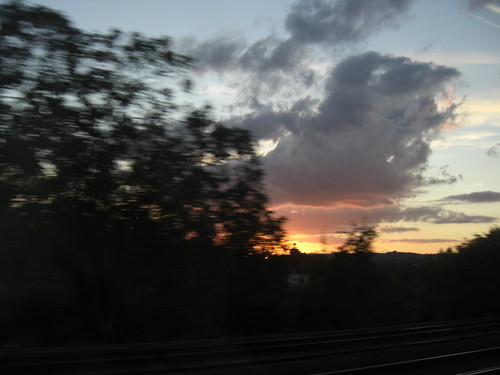
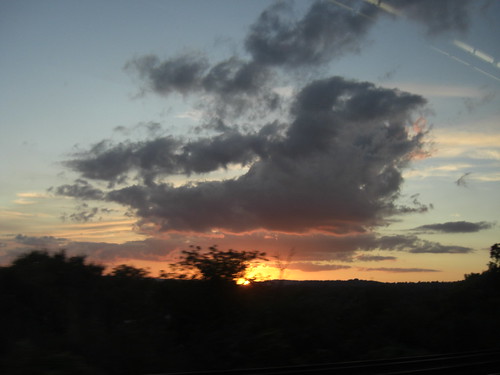
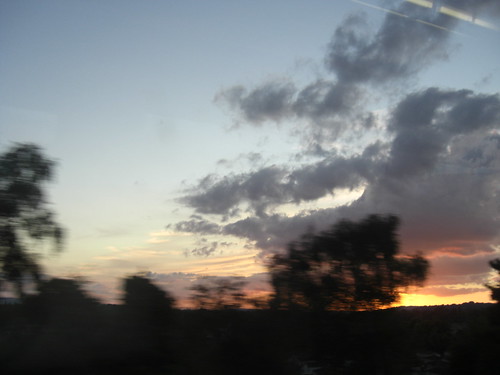
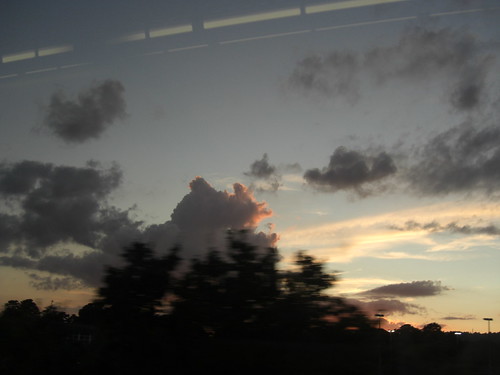





Labels:
Bushes,
clouds,
Generative Natural Elements,
Visual Research
Monday, 15 August 2011
Tutorial with Jonathan: Research Paper Question
This tutorial was quite short due to Kevin Fox coming to chat with us which I also found really helpful. He wrote a fab paper last year, click here for link.
Today's tutorial with Jonathan focused on my research paper question and a brief abstract. I usually write this at the end, but since we were all asked to write a brief abstract, I wrote one just for the time being. My question has been in a constant state of flux lately, but I now feel much happier with my latest question to explore:
Exploring Generative Art, by looking at how this process simulates nature and if this method is essential to the meaning of the artist's work? Looking at works through Joseph Nechvatal, Philip Galanter, Shardcore and Sam Hewitt.
Abstract:
The term Generative art is mainly know or thought of as a process. It is not an art movement or ideology, yet it does appear to be a process that artist's use to simulate aspects of life, whether this be for metaphysical/ontological inquiry, or simply though observing and copying characteristics of nature by employing generative systems to create aesthetic patterns.
Feedback from Jonathan:
I think your latest title that you sent me is excellent, much more focused
and manageable. As you have just been talking about with Kevin, avoid presumptions and you are doing this now, obviously your abstract will expand a bit when you have finished the paper, but overall it is looking good and I'm excited to see the outcome! I suggest you keep the interviews short and focused, the same questions for each and record obviously. Check with each that they are happy to have the transcript included in the paper, as they have agreed to be interviewed it should be ok, but they might want to see the transcript before the submission. Although you have primary sources, remember that we are looking for at least ten citations, so you will need some other sources as well, obviously your primary interviews will be the main things, but you may find connections with other writers or theorists. Other than that, I am happy! Great well done.
Today's tutorial with Jonathan focused on my research paper question and a brief abstract. I usually write this at the end, but since we were all asked to write a brief abstract, I wrote one just for the time being. My question has been in a constant state of flux lately, but I now feel much happier with my latest question to explore:
Exploring Generative Art, by looking at how this process simulates nature and if this method is essential to the meaning of the artist's work? Looking at works through Joseph Nechvatal, Philip Galanter, Shardcore and Sam Hewitt.
Abstract:
The term Generative art is mainly know or thought of as a process. It is not an art movement or ideology, yet it does appear to be a process that artist's use to simulate aspects of life, whether this be for metaphysical/ontological inquiry, or simply though observing and copying characteristics of nature by employing generative systems to create aesthetic patterns.
Feedback from Jonathan:
I think your latest title that you sent me is excellent, much more focused
and manageable. As you have just been talking about with Kevin, avoid presumptions and you are doing this now, obviously your abstract will expand a bit when you have finished the paper, but overall it is looking good and I'm excited to see the outcome! I suggest you keep the interviews short and focused, the same questions for each and record obviously. Check with each that they are happy to have the transcript included in the paper, as they have agreed to be interviewed it should be ok, but they might want to see the transcript before the submission. Although you have primary sources, remember that we are looking for at least ten citations, so you will need some other sources as well, obviously your primary interviews will be the main things, but you may find connections with other writers or theorists. Other than that, I am happy! Great well done.
Thursday, 11 August 2011
Cloud Formations
To be honest I haven't felt like doing any artwork due to the riots here in the UK at the moment. Also the anger and arguments on my Facebook news feed has got so bad too. Some people seem so irrational and have even been threatening one another! Yesterday I decided that I needed to escape from all this anger and get back into my project. I went out with my camcorder and filmed clouds and bubbles :-)
Below is a short video clip of low level clouds that were moving quite fast, while the higher level clouds were moving very slow and were almost static in comparison. I used the original audio sound and stretched it and slightly speeded up the film. I then colourised the video, plus adding some effects. This now looks nothing like the calm clouds that I was viewing but I am quite pleased with the outcome :-)
Below is a short video clip of low level clouds that were moving quite fast, while the higher level clouds were moving very slow and were almost static in comparison. I used the original audio sound and stretched it and slightly speeded up the film. I then colourised the video, plus adding some effects. This now looks nothing like the calm clouds that I was viewing but I am quite pleased with the outcome :-)
Tuesday, 2 August 2011
Generative Natural Elements: Dragon Clouds
Yesterday I saw some amazing cloud formations that reminded me of flying dragons. Below are some of the photos that I took of them :-)
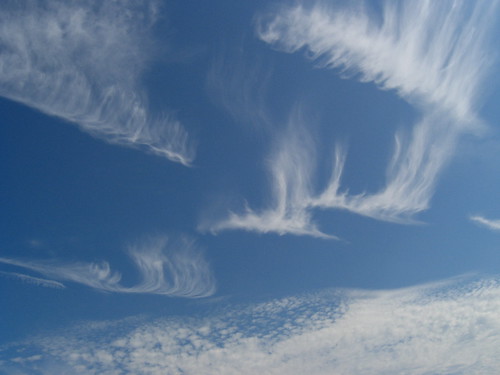
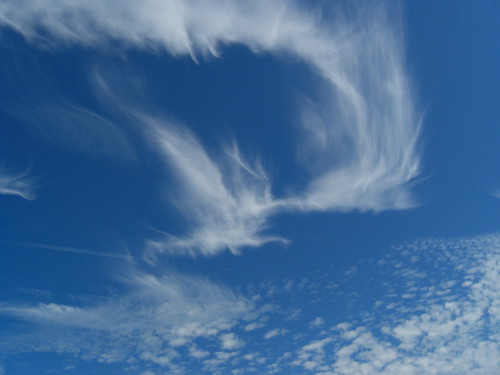
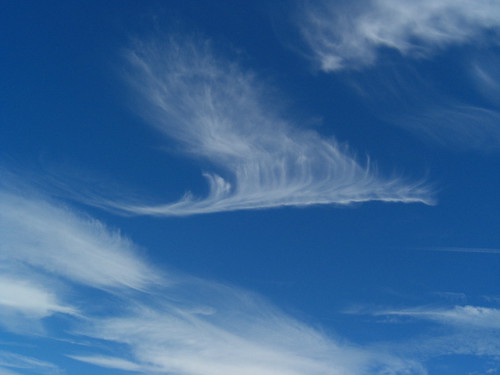
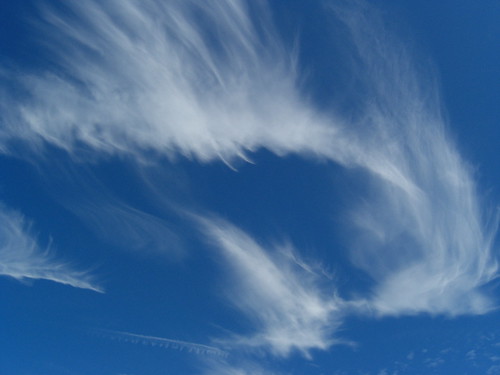
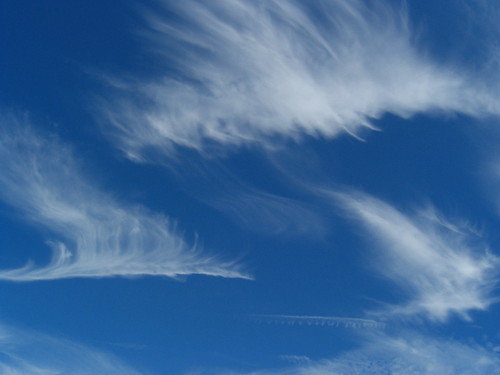
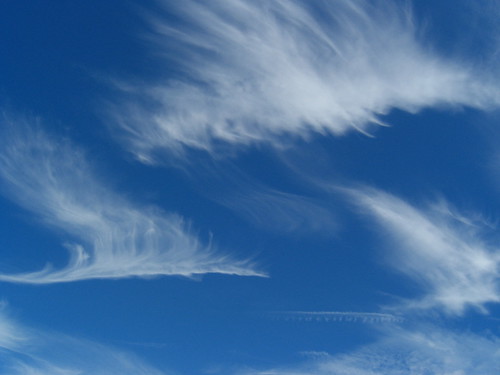
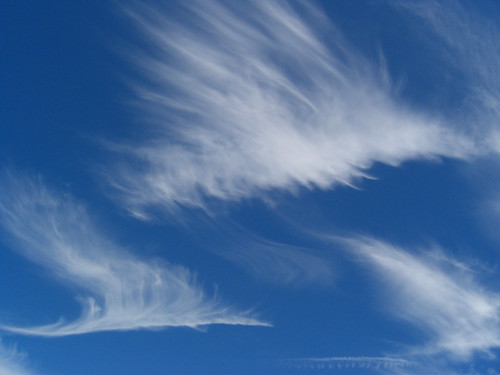

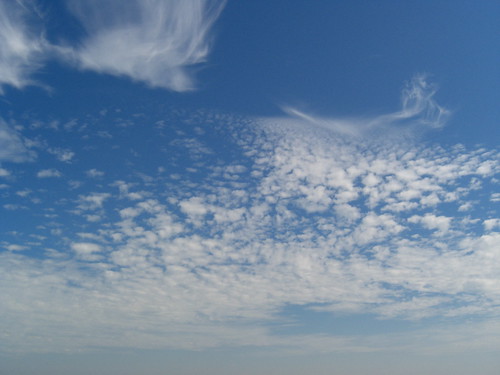









Subscribe to:
Posts (Atom)

